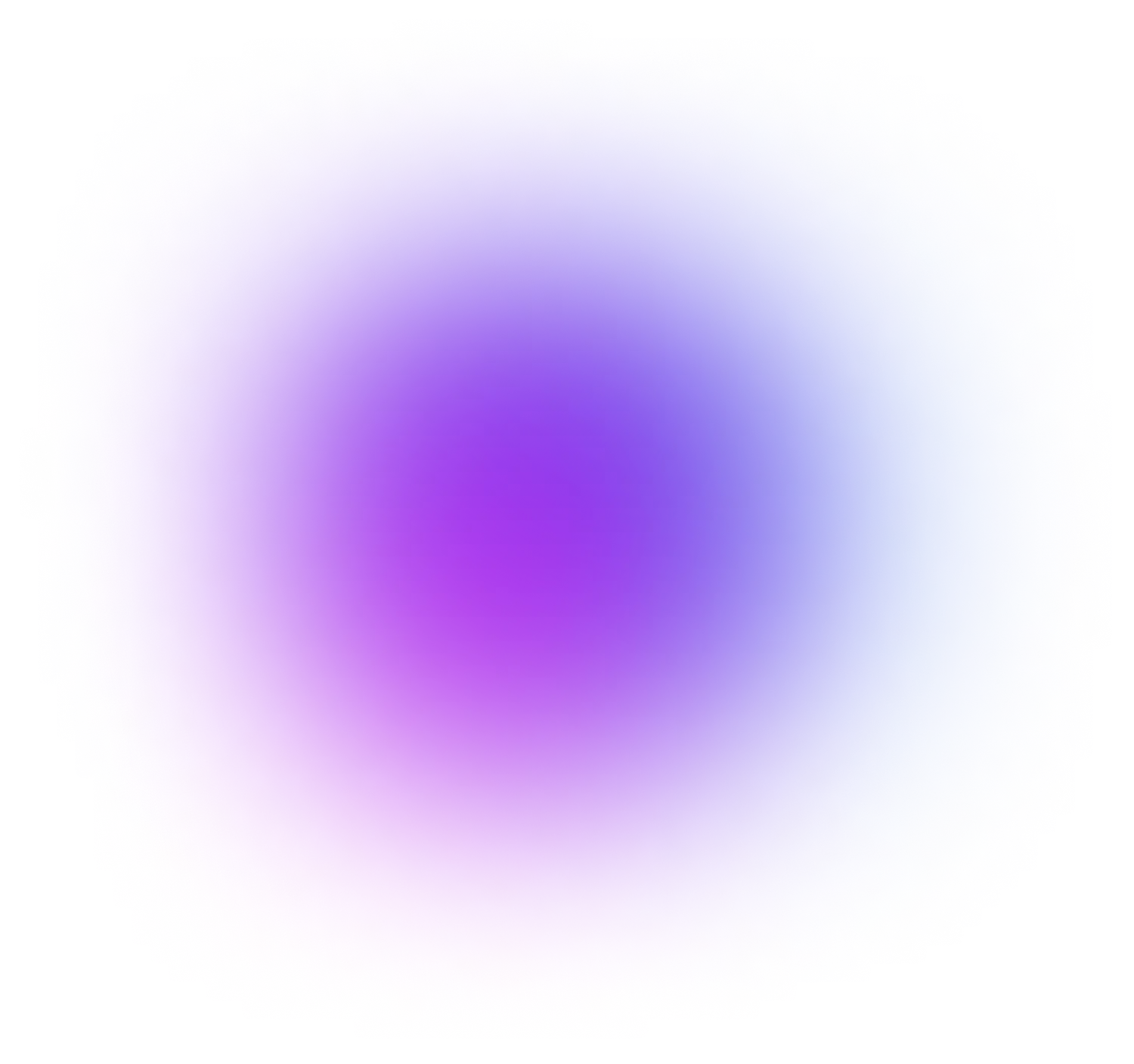Copyright Smart Link 2023. Data & Privacy
Why Ad Creative Fatigue Happens and How to Beat It
Published on
August 16, 2023
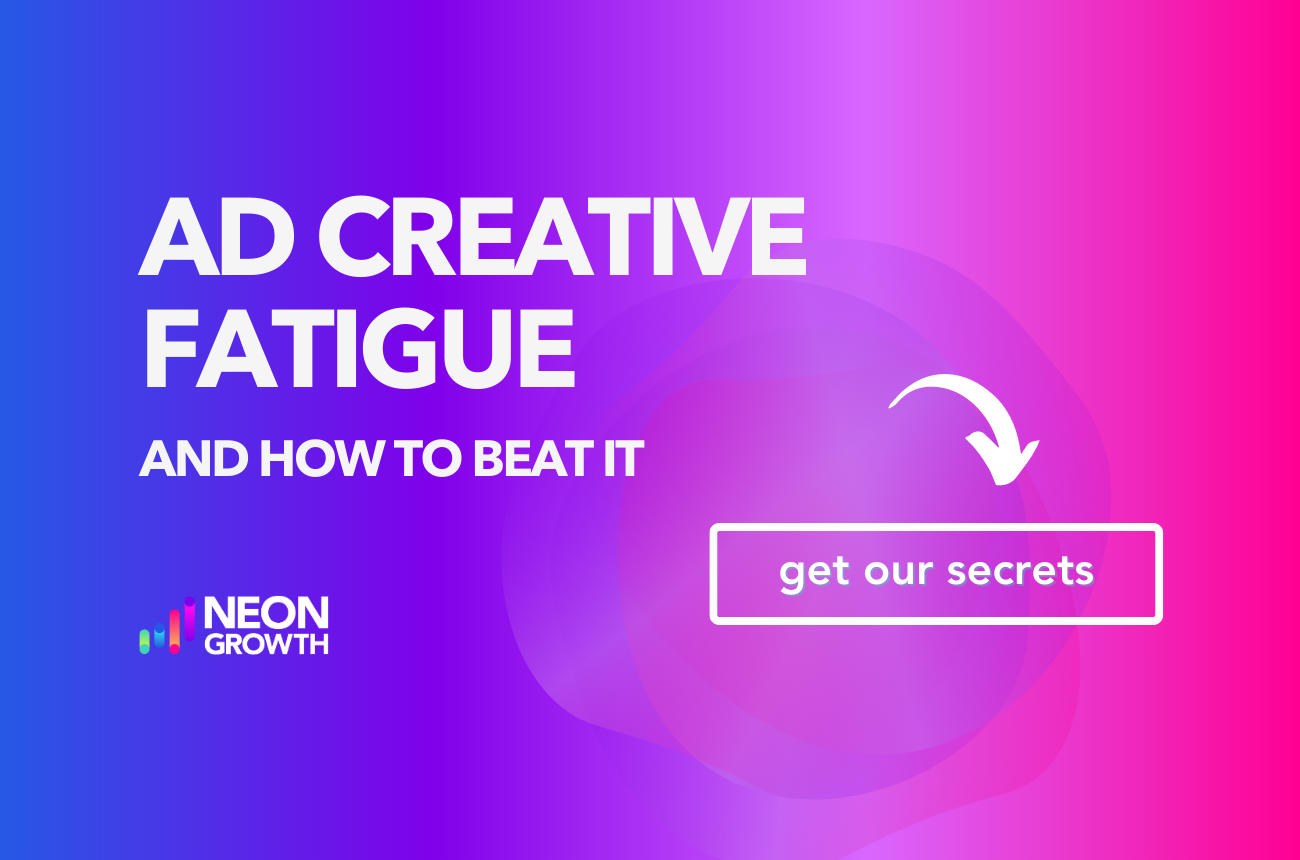
Ever wonder why that hero, formerly crushing every metric, suddenly falls off a cliff?
You check your campaigns - everything is in order. Your landing pages haven’t had any changes. Pixels are firing properly. So, what gives?
If you haven’t updated your ad creative in a while, you’re likely experiencing ad fatigue. Fortunately, this common problem is solvable with ongoing effort, attention to detail and fresh ads.
In this article, we will explore what causes ad creative exhaustion. We’ll also provide strategies for avoiding it and share how we prevent creative burnout for our clients.
Understanding Ad Fatigue: Human Behavior
Creative fatigue is a pretty common issue in digital advertising. It occurs when ad creatives become stale and begin losing their effectiveness.
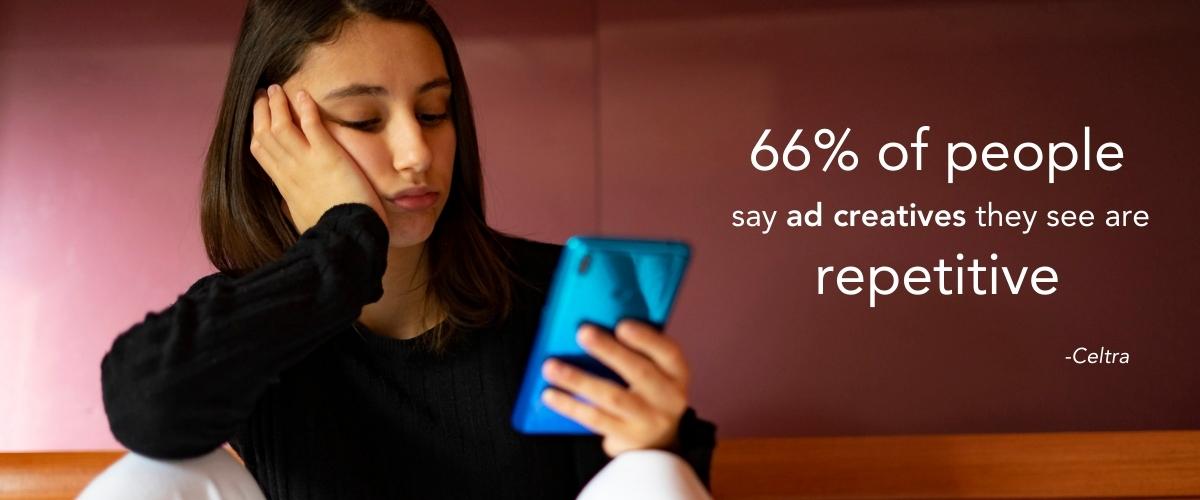
This issue stems from our human preference for novelty and newness. After we’re exposed to something many times, we lose interest. In the age of endless scrolling, this issue is only becoming more important for advertisers to tackle head-on.
In a survey of 1000 US consumers by Celtra, 66% of people found brand creatives repetitive. 44% reported being annoyed by ads they’ve seen too many times. Similarly, a 2019 survey by Kantar found that 73% of British respondents reported seeing the same ads multiple times.
Repeated ad exposure does have the effect of helping aid brand recall. However, at a certain threshold, the incremental value of paying to show the same user an ad drops. After many repeat exposures, viewers may even get upset at advertisers. Certainly not the goal!
What Causes Creative Fatigue?
Several factors contribute to ad campaigns fatiguing and losing effectiveness over time.
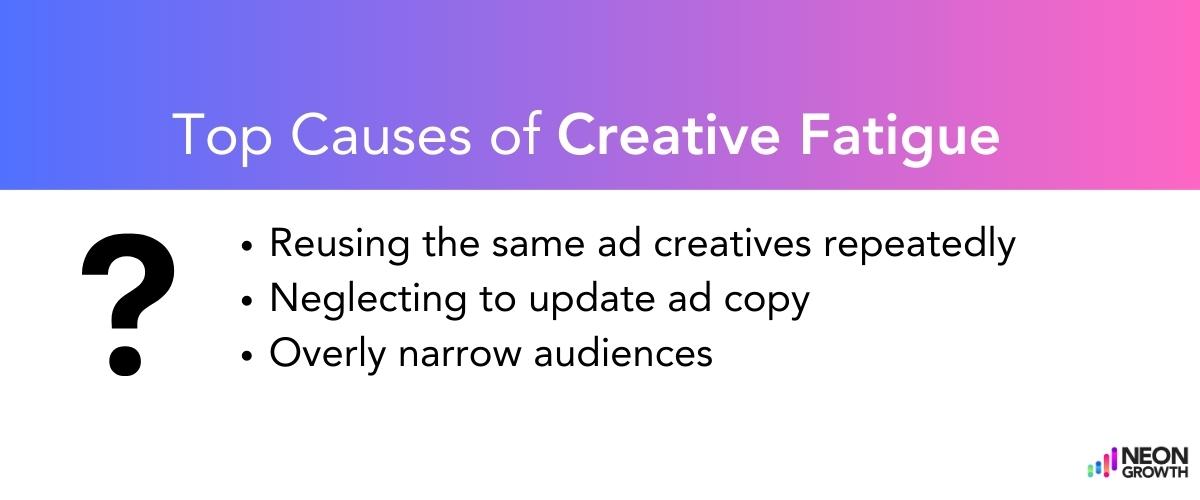
The most common cause of creative fatigue is using the same ads too long. Over time, ads lose their impact on the target audience. This leads to reduced engagement rates, lower click-through rates, and ultimately, decreased conversion rates.
Neglecting ad copy also contributes to ad fatigue. Ad copy is less important than visuals, but still plays a crucial role in conveying product benefits. Old, stale text captions are a missed opportunity and low hanging fruit.
Overly narrow audiences also force ad platforms to show your ad to the same people repeatedly. Always check your projected audience size and make sure it’s in sync with your budget.
The Negative Effects of Ad Fatigue
Creative fatigue yields several negative effects on ad campaigns. Typically, when ads approach exhaustion, you’ll start to see declines across key metrics.
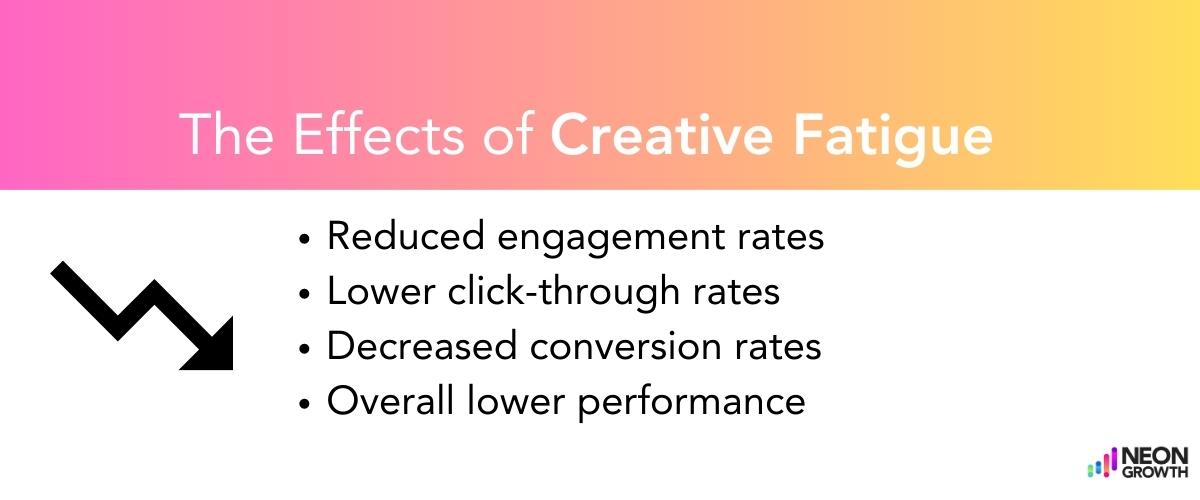
One of the most significant effects is reduced engagement rates. When ad creatives and copy become stale and lose novelty, people find them easier to ignore.
When people engage with ads less, they also click less. Thus, lower click-through rates are also a common negative effect of creative fatigue.
Fewer people clicking on ads means fewer opportunities for conversions. Fewer conversions ultimately result in a lower return on ad spend.
At Smart Link, our media buyers and creative strategists employ regular campaign audits to identify and prevent creative burnout. In fact, it’s one of our specialties.
We work closely with our clients to develop robust creative diversity using efficient modular and iterative strategies. Identifying new audiences, regularly testing copy, and structuring research-based messaging tests keeps ads fresh. We also utilize A/B testing and experiment designs to identify current winning elements and new angles.
Case Study: Home Electronics Brand
A new client came to us for paid social and paid search support. In the 3 months prior to working with us, their campaigns featured a small number of hero creatives. We identified signs of creative fatigue, with ads seeing high frequency and declining engagement.
To tackle this challenge we:
- Launched an in-depth audit, identifying key historic assets with potential for optimization.
- Refreshed campaigns swiftly using rapid asset creation tactics, netting immediate improvements.
- Developed new creative tests based on audience research and personas. This ensured the creative pipeline was prepared for increasing scale.
- Restructured search campaigns to increase non-brand volume, utilizing new copy angles.

Want to learn more? Get in touch today to learn how we can help your business achieve its advertising goals.
No items found.

